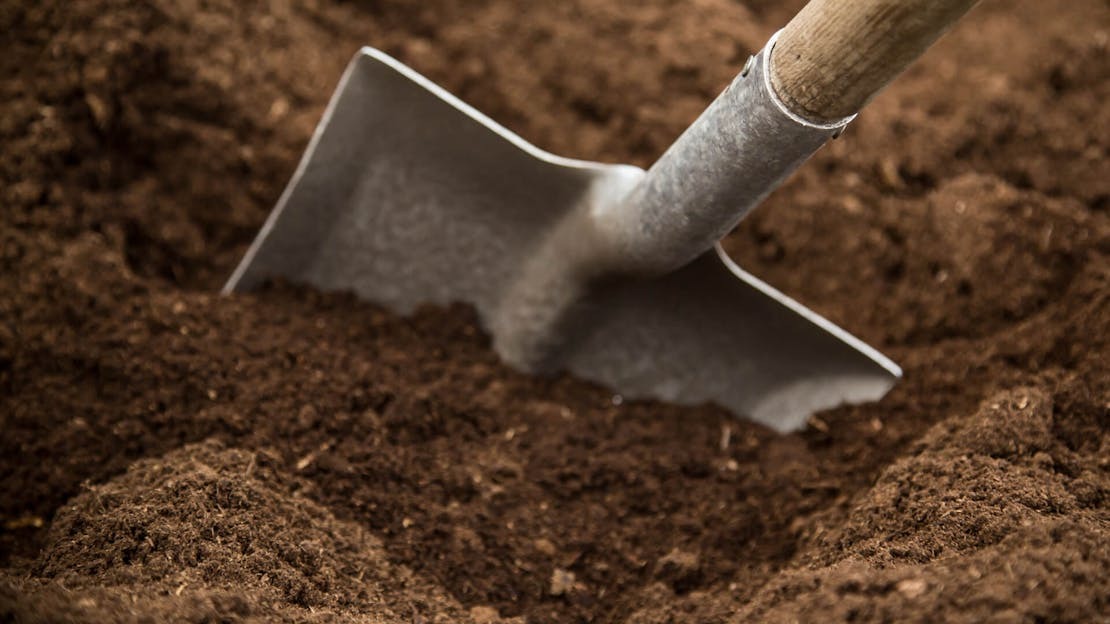
Top Dressing Procedure
Start by mowing the grass on the short side on a dry day, Next, portion your top dressing mix into a number of small piles placed evenly around the lawn.
Top dressing in conjunction with other lawn care maintenance procedures is not only highly beneficial but can often save time. So, if you are planning to aerate or scarify your lawn, do so prior to top dressing. As always, timing is critical, so only do this when growth conditions are good.
Planning & Preparation for Top Dressing
If you have thin or bare areas of lawn, have sacrificed or just fancy adding newer grass varieties, then over-seeding the lawn will be part of the operation. You should add the new grass seed after renovation and either before or after top dressing. If you have a lot of top dressing to work into the lawn, perhaps seeding afterwards is best so that the seed doesn’t get moved around as you rub and level the dressing. On the other hand, if you are only top dressing lightly, you could add the lawn seed first so that the dressing goes on top, thereby insulating the seed somewhat from birds and rain.
Depending on which book you read, some even advise mixing the top dressing and seed to save time. Unfortunately, it seems to make more work with the seed going where the top dressing goes – into the dips and with none on the bumps!
Quantity of Top Dressing Soil
If this is being done purely to smooth the lawn then you can apply at 3 to 4 kilos per square metre which will give about ¼” or just over half a centimetre in depth. Obviously, the dips will get more, but you must not smother the grass. The rule is 75% of the leaf must be exposed. At this rate you may be able to top dress twice in spring and once in autumn if need be.
For ornamental lawns where this is being done regularly as part of a lawn care program, then I wouldn’t apply at more than 1 to 2 kilos per square metre, with one kilo being preferable. Applying at half to one kilo means you can repeat this as often as you like throughout the growing season. This trickle dressing works in better, improves thatch decomposition and is less noticeable on fine lawns.
Application of Top Dressing
Mow the lawn on the short side and apply dry dressing on a dry day to a dry lawn.
Portion your top dressing into a number of small batches and place them evenly around the lawn. This means you will have a pile of soil every few metres.
Now, spread each pile over the area allocated to it. You can do this by scooping it up with your spade and flinging it into the allocated area or using the back of a rake to push and pull it into position. Landscapers or dummy rakes are super tools for doing this.
Finally, you need to brush or work the top dressing on the grass and dips. You can only get so far with the back of a rake, so now you need either a stiff brush or levelling lute to move and agitate the dressing into the turf. It’s slow work, but a little care and time will reward you with a much smoother surface. If you don’t work it into the hollows properly, you can make the lawn bumpier, so be warned!
If this is a done as part of a quality lawn care program then a ‘top dresser’ or heavy duty drop spreader is the only way to go plus a lute is essential for evenly working in the top dressing.
Over Seeding
If you are top dressing and over seeding, our preferred method is to seed after applying the top dressing so the seed doesn't get moved around with the soil as you work it in. Once seeded, very lightly brush the seed into the loose top dressing, firm or roll the surface and fertilise with a seasonal fertiliser. if doing this in spring, use a feed for all lawns or one for sandy soil, even if you have clay soil. Lastly, start watering often so the seed does not dry out, or water and cover it with polythene.
Follow up
Give the lawn a few days rest before using or mowing, otherwise you will blunt your mower on the top dressing material that is still on the grass leaves. If it doesn’t rain give the lawn a light watering to wash in any lose material.